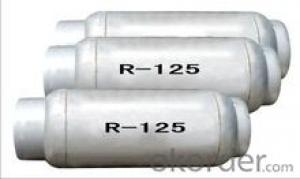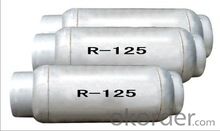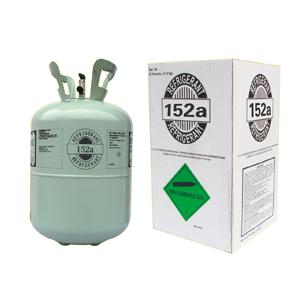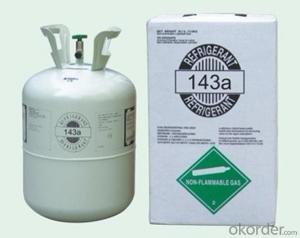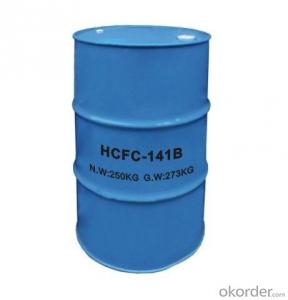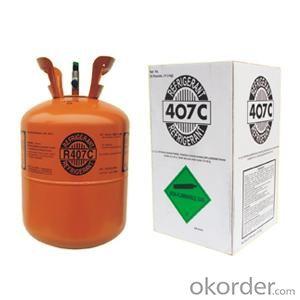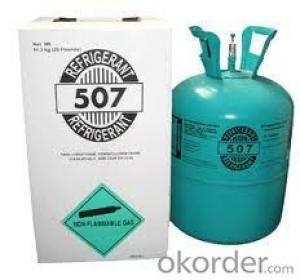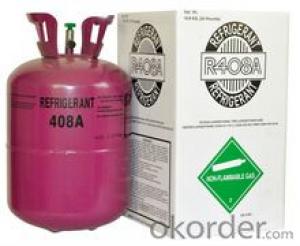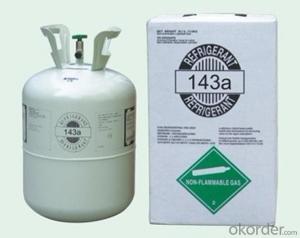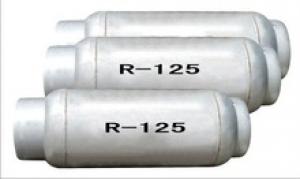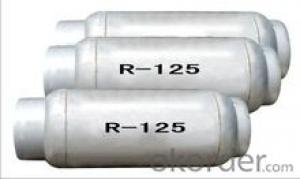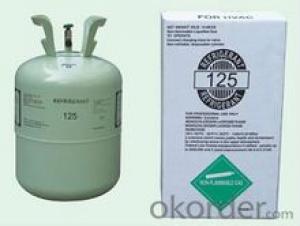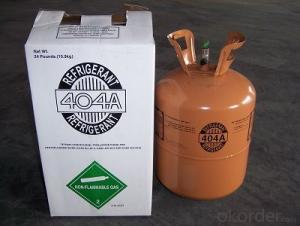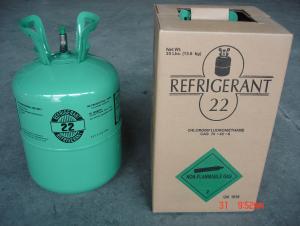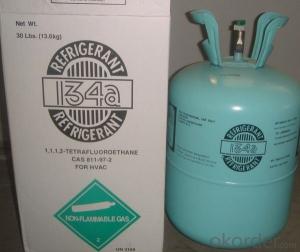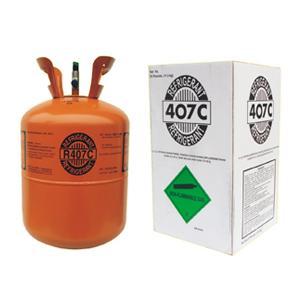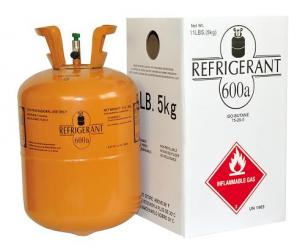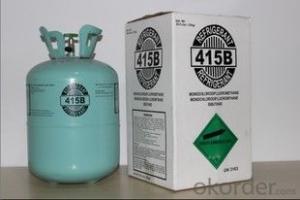Fire Extinguishing Agent R125a
- Loading Port:
- Shanghai
- Payment Terms:
- TT OR LC
- Min Order Qty:
- -
- Supply Capability:
- 1000MT m.t./month
OKorder Service Pledge
OKorder Financial Service
You Might Also Like
Specifications
1.OEM is accepted
2.Delivery time:15 days
3.Good service after sale
4.competitive price in this line
Refrigerant R125a, it is an important component of mixed working substance, and can replace R502 and R22. Used as fire-extinguishing agent, can replace Halon1211 and Halon1301.
Property of chloride
Formula: CHF2CF3
Molecular weight: 120.0
B.P.,°C: -48.3
Critical temperature,°C: 66.05
Critical pressure, MPa: 3.59
Critical density, g/cm3: 0.571
Liquid density, 25°C,g/cm3: 1.19
Vaporization heat at B.P., KJ/Kg: 165
ODP(CFC-11=1): 0
QWP(CO2=1): 3500
Quality standard
Appearance: Colorless, no turbid
Odor: Odorless
Purity, ≥%: 99.8
Water, ≤%: 0.001
Acidity, ≤%: 0.0001
Residue on evaporation, ≤%: 0.001
Packaging & Delivery
| Packaging Detail: | 800kg, 1000kg, ISO tank. |
| Delivery Detail: | 15days |
- Q: Is carbon monoxide an organic gas?
- Carbon dioxide is highly toxic. It is a strong ability to combine blood hemoglobin, which leads to cell hypoxia and suffocation. At present, if the trace carbon monoxide environment work, do not wear a gas mask and other necessary, it is recommended to eat more iron and calcium foods to reduce the harm to the body.
- Q: Why the silicon hydride less, a lot of hydrocarbons. (Why did not you find silicon-based creatures) and why are so many oxides of silicon, little carbon oxides?
- You know silane bar, SiH4, this thing will be spontaneous, very unstable
- Q: Why is dry ice not organic?
- Inorganic compounds are pure metals that do not contain carbon and a collection of simple carbon compounds such as carbon monoxide, carbon dioxide, carbonates, carbonates and carbides.
- Q: Are there two derivatives of equivalent hydrogen?
- You give the scope is too broad, at least to set in what kind of functional group range ah.
- Q: What are the derivatives of hydrocarbons?
- Including alcohols, acids, aldehydes, ethers, esters, halogenated hydrocarbons and the like
- Q: What is the difference between organic matter and inorganic matter?
- Inorganic matter is an inorganic compound. Generally refers to the elements other than carbon elements, such as water, salt, sulfuric acid, lime and so on. However, some simple carbon compounds such as carbon monoxide, carbon dioxide, carbonates, carbonates and carbides, because of their composition and properties and inorganic similar, so also as an inorganic to study. The vast majority of inorganic matter can be classified as oxides, acids, alkalis and salts.
- Q: How to do it? Solve Inorganic Chemistry
- Inorganic chemistry is one of the earliest disciplines in the development of chemical science. It undertakes a major task of studying the composition, structure, properties and reactions of all elements and elements (except hydrocarbons and derivatives). The current development of inorganic chemistry has two distinct trends, that is, in the breadth of the broadening and depth of the advance. It is the three pillars of modern civilization
- Q: What is the most primitive person on earth?
- These macromolecules are not in the modern sense of the protein and nucleic acid polymer, but a variety of amino acids, nucleosides, phosphoric acid, carbohydrates and some other small molecules of the disorder of the polymer, when the nucleoside and phosphoric acid composition of nucleoside Acid, and gradually form a nucleotide chain, the formation of these nucleotide chain of the amino acid on the formation of the field of binding force, and then assembled peptide chain. Or by the combination of a variety of amino acids into peptide chain formed by the force field on the surrounding nucleus formation field binding effect, and then assembled the nucleotide chain, with the formation of peptide chain and nucleotide chain longer and longer , The molecular weight is growing, and ultimately the formation of nucleic acids and proteins, nucleic acid and protein formation is the product of interaction with each other, is generated at the same time.
- Q: What are the characteristics of organic compounds?
- Organic compounds are usually referred to as carbon-containing compounds, or hydrocarbon-containing compounds and their derivatives are collectively referred to as organic matter. Organic compounds are generally insoluble in water and soluble in organic solvents with lower melting points. The vast majority of organic matter heat easily decomposed, easy to burn. The reaction of organic matter is generally slow and often accompanied by side effects, and there are many kinds of organic compounds, which can be divided into two major categories of hydrocarbon and hydrocarbon derivatives. According to the organic groups contained in the functional groups, divided into alkanes, alkenes, alkynes, aromatic hydrocarbons and alcohols, aldehydes, carboxylic acids, esters and so on. According to the organic carbon molecular structure, can also be divided into open chain compounds, carbocyclic compounds and heterocyclic compounds three categories.
- Q: What is organic matter? Candle is organic?
- Organic matter refers to the addition: carbon, carbon monoxide, carbon dioxide, carbonated and carbonate carbon compounds
Send your message to us
Fire Extinguishing Agent R125a
- Loading Port:
- Shanghai
- Payment Terms:
- TT OR LC
- Min Order Qty:
- -
- Supply Capability:
- 1000MT m.t./month
OKorder Service Pledge
OKorder Financial Service
Similar products
Hot products
Hot Searches
